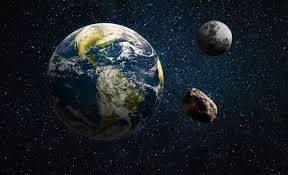NASA Discovers Potential Second Moon of Earth: An Asteroid Capture

Introduction
The concept of Earth having a second moon has intrigued scientists for decades. Recent research led by NASA has reignited this fascination with the potential discovery of what might be classified as a second moon around our planet. This phenomenon is primarily regarded as a captured asteroid, stirring discussions about its origins and implications for our understanding of celestial mechanics.
Details of the Discovery
NASA’s latest observations indicate that a small asteroid, designated 2020 CD3, may be temporarily orbiting Earth, acting much like a second moon. Discovered in February 2020, this object measures approximately 1 to 6 feet in diameter and is classified as a “mini-moon.” Scientists believe that 2020 CD3 was captured by Earth’s gravity, making it the first confirmed natural satellite discovered in nearly 50 years.
Theories suggest that this mini-moon is not the first to visit our planet—historical data suggests that Earth has experienced several such captures over the millennia. These transitory moons orbit Earth for a limited time before being ejected back into space or colliding with the planet.
Importance and Implications
The existence of a second moon has profound implications for understanding the dynamics of our solar system. Studying objects like 2020 CD3 can provide insights into early planetary formation and the gravitational interactions that govern such captures. Furthermore, these studies could assist in developing strategies for asteroid tracking and planetary defence, as scientists address potential threats posed by larger asteroids in close proximity to Earth.
Conclusion
As research continues, the potential of detecting more mini-moons adds to the complexity and nuance of our understanding of Earth’s circumstantial surroundings. While 2020 CD3 is a temporary visitor, its discovery showcases the ongoing advancements in space observation technologies and reinforces the importance of continual exploration. The prospects of uncovering additional natural satellites or understanding their movements bolster the need for future studies aimed at improving our knowledge of Earth’s celestial companions and their impacts on our planet.








